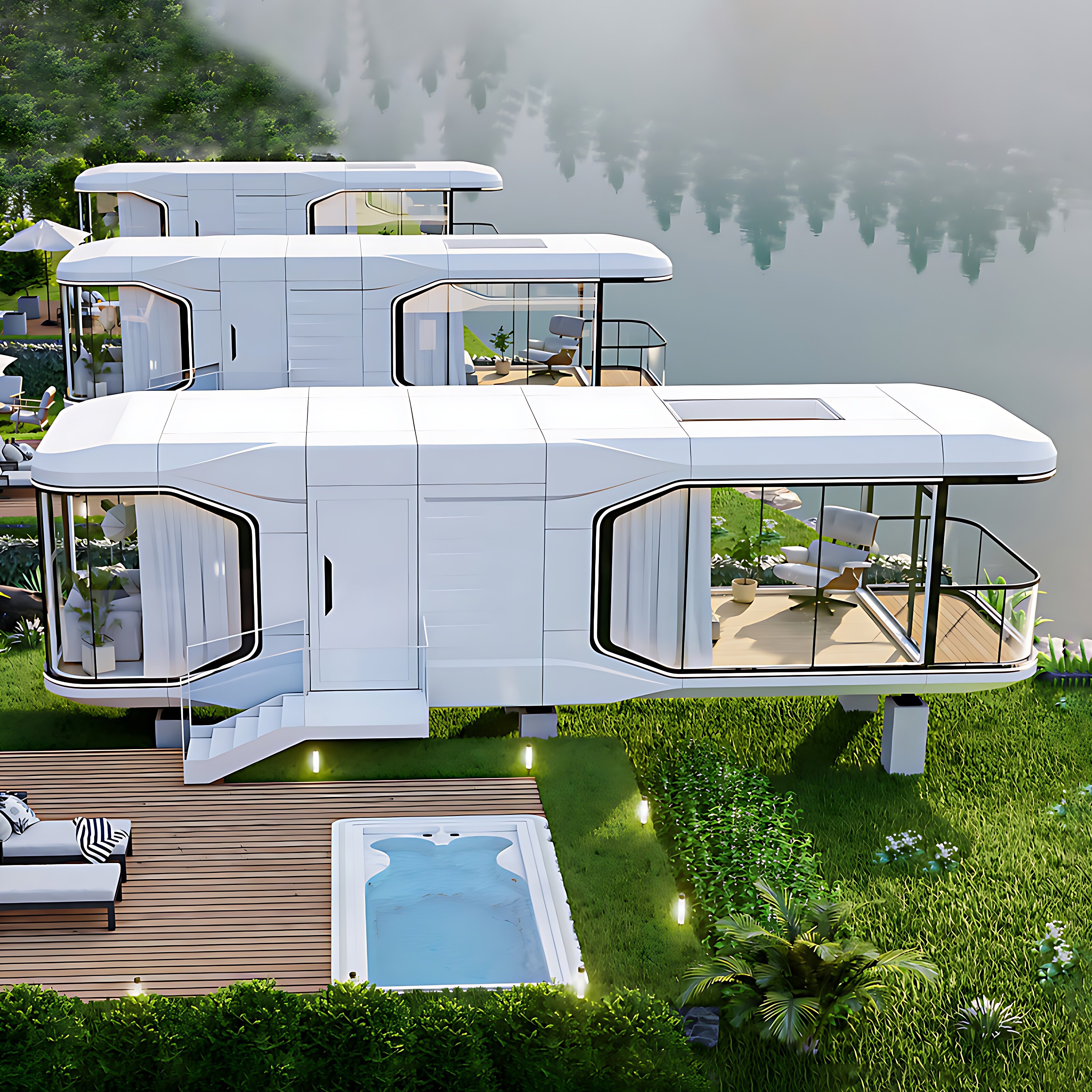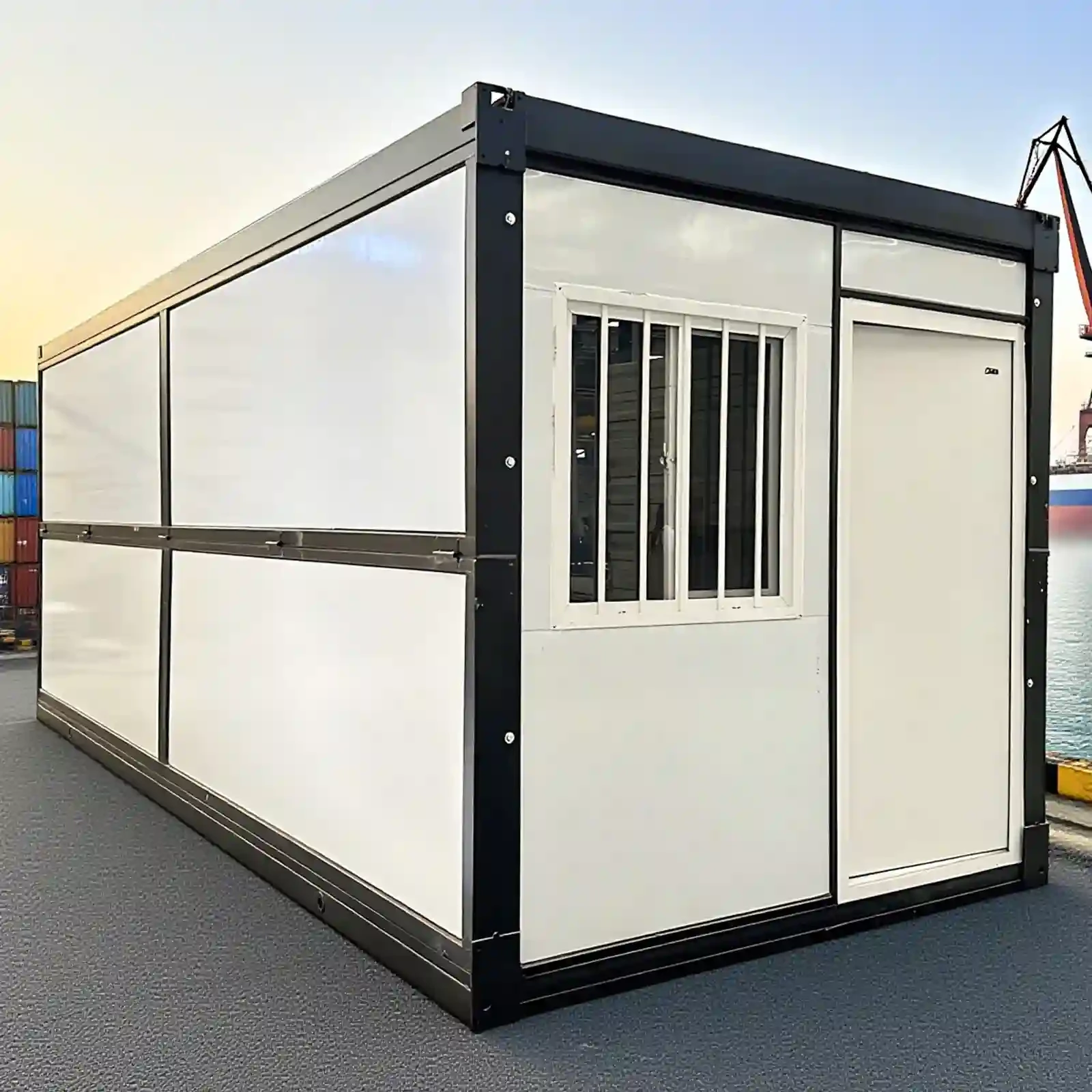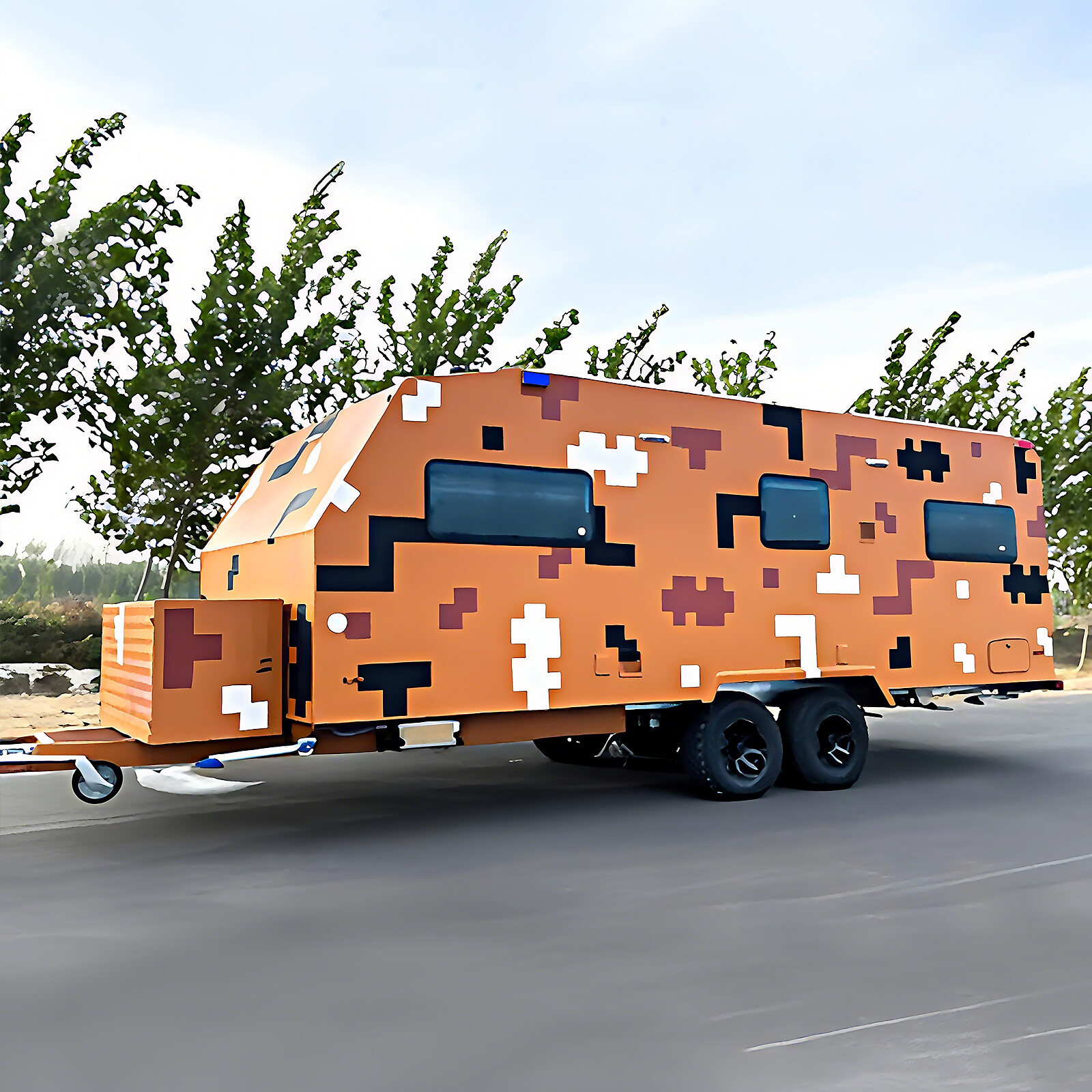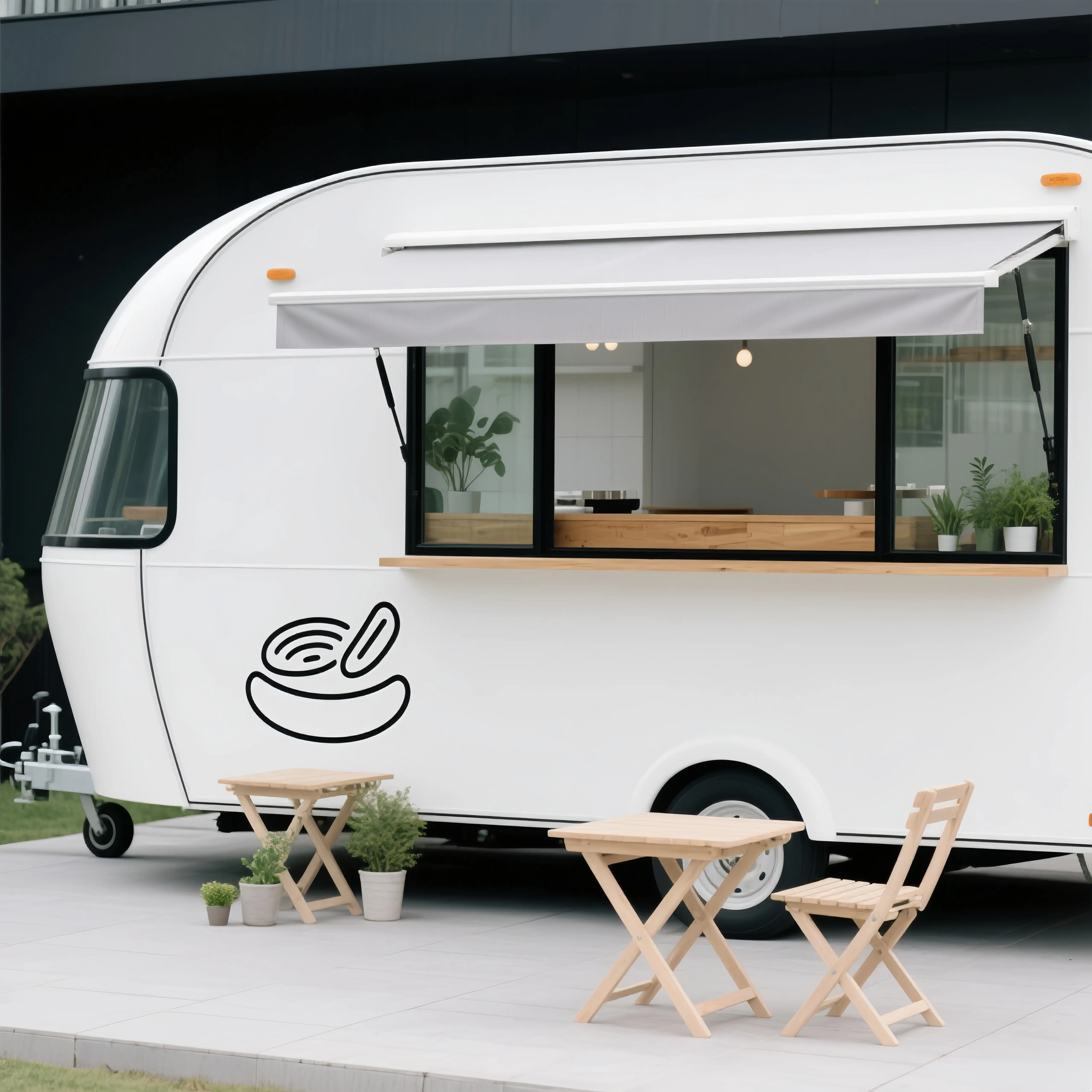Against the backdrop of global advocacy for sustainable development, the construction industry is actively exploring more environmentally friendly housing solutions. As an emerging form of housing, mobile capsule homes are attracting significant attention for their environmental performance. So, what standards do mobile capsule homes meet in terms of environmental performance?
Selection criteria for environmentally friendly materials
Mobile space capsules adhere to strict environmental guidelines in their material selection. First, the main structure is often constructed of lightweight, high-strength aluminum alloy or steel. Aluminum alloy offers excellent corrosion resistance, reducing the waste of resources that would otherwise require frequent material replacement due to corrosion. Furthermore, its high recyclability means that at the end of its lifespan, most aluminum alloy materials can be recycled and reprocessed for reuse. Regarding steel, many space capsules utilize recycled steel, which significantly reduces energy consumption and CO2 emissions during production compared to virgin steel. For example, using recycled steel to manufacture space capsule structures can reduce energy consumption and associated carbon emissions by approximately 70%.
Environmentally friendly panels are the preferred choice for the space capsule's enclosure structure. Commonly used are polystyrene sandwich panels and polyurethane sandwich panels. Polystyrene sandwich panels offer excellent thermal insulation, effectively reducing heat transfer between indoor and outdoor spaces and lowering energy consumption for air conditioners and other equipment. Their production process is relatively simple, and the raw materials are recyclable. Polyurethane sandwich panels also offer excellent thermal insulation and outstanding flame retardancy. Some manufacturers use environmentally friendly fluorine-free foaming technology in the production of polyurethane sandwich panels, avoiding the emission of ozone-depleting substances such as Freon, complying with international environmental conventions.
Interior materials also prioritize environmental friendliness. Water-based paint is often used for wall decoration. Water-based paint uses water as a diluent and does not contain organic solvents, reducing emissions of volatile organic compounds (VOCs), lowering the impact on indoor air quality and protecting occupants' health. Flooring often uses recycled rubber or bamboo flooring. Recycled rubber flooring is made from recycled rubber products such as waste tires, achieving resource recycling while also offering excellent anti-slip and wear-resistant properties. Bamboo flooring, on the other hand, is made from fast-growing bamboo, a sustainable resource that consumes less forest resources than solid wood flooring.
Energy utilization and energy conservation standards
Mobile space capsules strive to achieve efficient energy conservation. LED lighting is widely used in lighting systems. LED lamps offer low energy consumption and a long lifespan, reducing energy consumption by over 80% compared to traditional incandescent lamps. For example, a 10-square-meter space capsule might use 40 watts of lighting using traditional incandescent lamps. LEDs, however, only require 5-8 watts, significantly reducing power consumption.
For heating and cooling, the capsule homes utilize a variety of energy-saving technologies. Some are equipped with highly efficient heat pump systems, which draw heat from the air or underground for heating and reverse the process in summer for cooling. This significantly improves energy efficiency compared to traditional electric heaters or air conditioners. For example, air-source heat pumps can achieve an energy efficiency ratio of 3-4, meaning that for every ounce of electricity consumed, they produce 3-4 ounces of heat or cooling, effectively reducing energy consumption. Furthermore, the capsules' excellent insulation reduces heating and cooling loads. The insulation thickness and material properties of the building envelope have been carefully designed to meet the national building energy efficiency standards for exterior wall and roof insulation, minimizing heat loss from the interior and heat gain from the outside.
Many mobile space capsules are also equipped to utilize renewable energy. A common approach is to install photovoltaic panels, which convert solar energy into electricity, providing some or all of the capsule's power needs. In sunny areas, a capsule equipped with 5 square meters of photovoltaic panels can generate approximately 2-3 kilowatt-hours of electricity per day, sufficient to meet daily electricity needs for lighting, small appliances, and other devices. Some advanced capsules are even equipped with energy storage systems, such as lithium batteries, to store excess daytime solar energy for use at night or on cloudy days. This achieves energy self-sufficiency, reduces dependence on the traditional power grid, and lowers carbon emissions.
Waste disposal and recycling standards
The design of the mobile capsule houses fully considers waste disposal and recycling. During the construction process, construction waste, such as scraps and discarded packaging materials, is sorted and recycled. Metal scraps can be directly recycled to metal processing plants for remelting, while wood scraps can be used to make small furniture components or biomass fuel. Through effective construction waste management, most waste can be repurposed, reducing the land use and environmental pollution caused by landfill disposal.
In daily life, capsule homes also prioritize waste sorting and disposal. Some capsules are equipped with small waste sorting devices to guide residents in separating household waste into recyclables, hazardous waste, and other waste. Recyclables such as paper, plastic bottles, and metal cans are regularly collected and sent to the recycling system. Hazardous waste, such as used batteries and expired medicines, is collected and handled by professional environmental protection agencies to prevent harmful substances from entering the environment. Some capsules are also experimenting with small organic waste treatment equipment to ferment organic waste, such as food scraps, and convert it into organic fertilizer for use in landscaping around the capsule, thus realizing the resource utilization of organic waste.
Throughout their lifecycle, mobile capsule homes adhere to environmental standards even during the dismantling phase. Their modular design simplifies the dismantling process, reducing the generation of construction waste. Dismantled materials, such as aluminum alloy structural members and exterior panels, can be reused or recycled depending on their condition. For example, some capsules that are relatively young but still structurally sound can be relocated, in whole or in part, for reassembly elsewhere, significantly improving resource efficiency.
The Mobile Space Capsule House meets high environmental standards in terms of material selection, energy utilization, and waste disposal. By using environmentally friendly materials, achieving high energy efficiency, and focusing on waste recycling, it provides a green and sustainable living option, conforming to current environmental trends in the construction industry and making a positive contribution to the advancement of environmental protection.

 USD
USD
 GBP
GBP
 EUR
EUR






